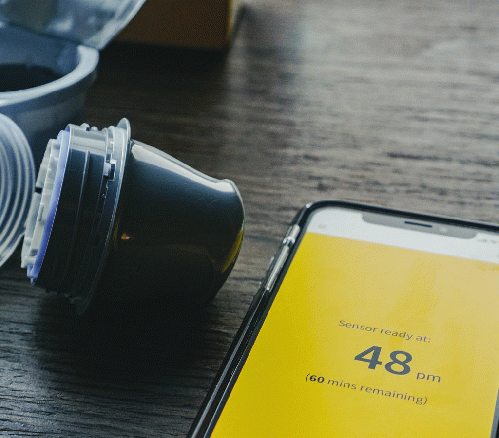This year, CES 2020 was focused mostly on renewable energy. The technology conference always has different themes, but the products and innovations showcased don't have to be exclusively centered on eco-friendly products. This year two wearable diabetes treatments were at CES. Health technology is always a factor at the conference. These non-invasive methods allow diabetes patients to control their condition in a new way. These come with advantages and limitations, but those struggling with diabetes can benefit from the two devices below.
AerBetic
The AerBetic was inspired by the olfactory sense of the dog. That's right, dogs have such good noses they can smell a change in a human's blood sugar. Designed to help you recognize help you keep track of your glucose levels, the device uses nanosensor technology to detect gases that humans emit. This gas-sensing technology has created a non-invasive, affordable, and wearable diabetes product. It was customized with an app. It has the ability to sense multiple gases simultaneously. Low detection levels are necessary to monitor blood sugar. The AerBetic can even indicate conditions like hypoglycemia or hyperglycemia.
Glutrac
The second of the wearable diabetes technology is the Glutrac by the Hong Kong-based company Add Care. They aim to provide non-invasive glucose monitoring that is continuous and convenient. There are more than 29 million people in the United States alone who are living with diabetes, and the Glutrac is endeavoring to achieve the level of accuracy that not only provides the ability to monitor glucose levels without pricking the finger, the Glutrac presents data moment-to-moment. The only thing close to this technology currently are the sensors that enter the interstitial fluid.
The Glutrac uses artificial intelligence to estimate a person's blood sugar levels. It is like a smartwatch that measures glucose. It can also show you your vital signs, including heart rate. AI calculates your glucose levels and tells you if you are under or over. The Glutrac watch has sensors on the back that record health data every 15 minutes according to MoneyPug, a site that is used to compare health insurance. When it gives you data, it provides blood sugar levels and provide on-demand readings. It takes about a minute to measure your levels, analyze the findings, and deliver the measurements. Due to the level of technology that these wearables have, there will probably be a lot more products like them at CES in the future.
Technology & Health
The health and medicine industries are just two of the fields that technology have changed and will continue to change. These sectors and others may be completely revolutionized by AI, 5G, and automation. There is no foreseeable end to the innovations that technology could offer. Monitoring blood glucose is just one of the many uses of these technological breakthroughs. Currently the health of the human beings could be better, and new technologies will likely provide solutions to our increasingly sedentary lifestyles.
Every CES has some of the latest technologies the world has to offer. Not only are tech companies putting money into gadgets that enhance our lives and make them more convenient, they are investing in products that can help us more practically. Our health and the future of the environment are massive issues that can be changed by new technologies. This year renewable energy and eco-friendly products were the focus of CES, but they weren't the only things that were showcased.
Health will continue to be a part of the conversation at the CES conference. Technology will not only finally create a fully closed-loop glucose monitor and insulin dispenser, but it will also offer many more products that will improve our lives. It goes without saying that diabetes is not the only condition that technology will help out, the whole industry of medicine will go through some big changes as remote surgeries become possible and AI machine learning provides better health care providers than the human race has ever known. While it may not seem like a big deal that these wearables use technology to monitor blood sugar levels, it is indicative of a much bigger shift that will lead to some unheard-of treatments and solutions that we could never imagine.
This article has been published in accordance with opednews.com's disclosure policy'.





